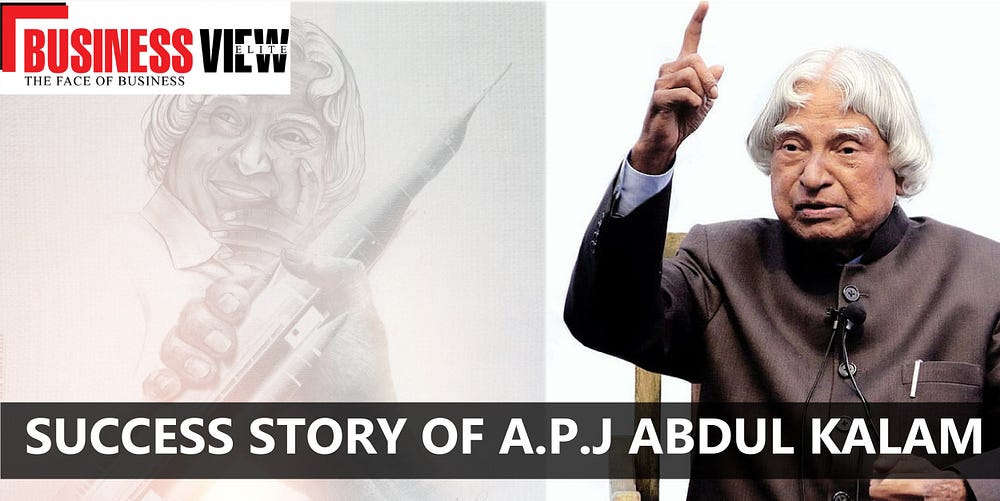Success Story of APJ Abdul Kalam

Former President and Missile Man of India Dr APJ Abdul Kalam, is one of the most beloved figures of our nation. Known for his humility, support for humanitarian causes, and commitment towards grassroots creativity and innovation, this Bharat Ratan awardee is widely respected and remembered. His work on the development of ballistic missiles and launch vehicle technology gave him the title of the Missile Man of India. Widely referred to as the “People’s President”, APJ Abdul Kalam served as the 11th president of India from 2002 to 2007.
APJ Abdul Kalam story: Childhood and Adolescent years
On October 15, 1931, APJ Abdul Kalam aka Avul Pakir Jainulabdeen Abdul Kalam was born into a Tamil Muslim family in the pilgrimage center of Rameswaram on Pamban Island, then in the Madras Presidency and now in the State of Tamil Nadu. Kalam had four older brothers and one older sister. His father Jainulabdeen, an imam of a local mosque owned a ferry that took Hindu pilgrims back and forth between Rameswaram and the now uninhabited Dhanushkodi. At the same time, his mother Ashiamma was a housewife. In 1914, the Pamban Bridge opened to the mainland, causing their business to sink.
Over time the family fortune and properties were lost, apart from the ancestral home. Kalam’s family had become poor by his early childhood. This further led to him selling newspapers from an early age to supplement his family’s income. He completed his education at the Schwartz Higher Secondary School, Ramanathapuram, and went on to attend Saint Joseph’s College, Tiruchirappalli. Kalam graduated from there in 1954 with a degree in Physics. He then moved to Madras to study aerospace engineering at the Madras Institute of Technology. He graduated in 1960.
APJ Abdul Kalam journey: From scientist to President
After graduation, APJ Abdul Kalam joined the Aeronautical Development Establishment of the Defence Research and Development Organisation as a scientist after becoming a member of the Defence Research & Development Service (DRDS). Kalm worked under the renowned space scientist, Vikram Sarabhai, as part of the INCOSPAR committee. He was transferred to ISRO in 1969, where he acted as the project director of India’s first Satellite Launch Vehicle (SLV-III).
SLV-III successfully deployed the Rohini satellite in near-earth orbit in July 1980. During the 1970s to 1990s, Kalam was directly involved in the development of the Polar Satellite Launch Vehicle (PSLV) and SLV-III projects, both of which proved to be successful. From July 1992 to December 1999, Dr APJ Abdul Kalam served as the Chief Scientific Adviser to the Prime Minister and Secretary of the Defence Research and Development Organisation. In the 2002 presidential election, he won with an electoral vote of 922,884, surpassing the 107,366 votes won by Lakshmi Sahgal.
It was during his presidency characterized by a unique blend of humility, wisdom, and a deep connection with the people, that he was affectionately named the “People’s President”. Unlike many previous presidents, Dr. APJ Abdul Kalam preferred to stay away from the traditional trappings of the office and chose to engage directly with the youth and various communities across the country.
APJ Abdul Kalam success story: How he became the Missile man of India
APJ Abdul Kalam directed Project Devil and Project Valiant in the 1970s, which sought to develop ballistic missiles from the technology of the successful SLV programme. As the chief executive of the mission named Integrated Guided Missile Development Programme (IGMDP), he played a major role in developing many missiles including Agni, an intermediate-range ballistic missile, and
Read Full Article On : https://businessviewelite.com/blog/success-story-of-apj-abdul-kalam/

Comments
Post a Comment